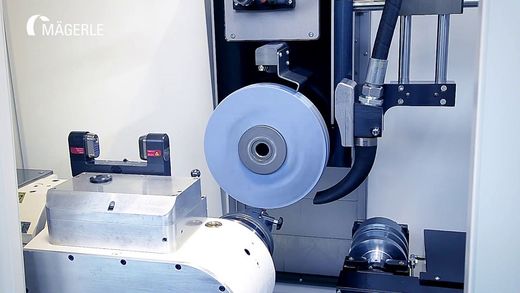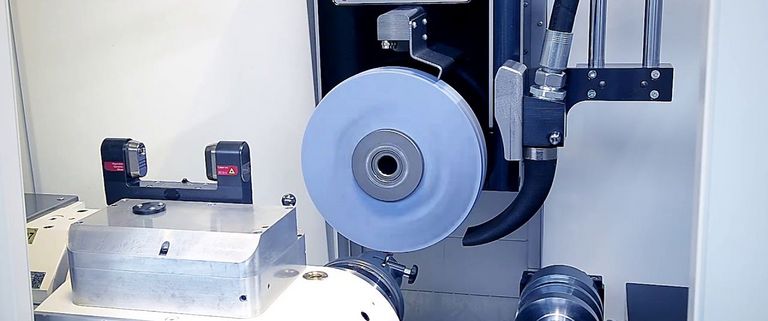Small Aerospace Parts Require Big Multi-Tasking Grinders
When it comes to aerospace part production, many shops focus on the big parts – the massive turbine blades and housings, expansive fuselage panels and robust landing gear components tend to present the most exciting challenges for manufacturing professionals. But as with many industries, the real challenges in the aerospace sector often involve the small parts, the precision screws and highly engineered brackets and more.
Nowhere is this more true than in the production of small blades, vanes and shrouds used in modern jet engines. And for these smaller components, UNITED GRINDING North America offers the MÄGERLE MFP 30, a compact, 5-axis grinding solution that maximizes space utilization, facilitates smooth production flow and offers the exceptional performance necessary for the aerospace industry.
For top effectiveness, the MFP 30 machine focuses on the MÄGERLE design elements that have proven successful in the larger platforms. For instance, preloaded ballscrews prevent backlash while hydrostatic wrap-around guideways on the Y-axis provide a dampening effect that helps ensure accuracy and assures high metal removal rates along with extended tool life. Twin bearings and a servo motor drive facilitate reliable dressing across the entire speed range with the machine’s space-efficient double-sided table dresser.
Even in compact machines, features that support strength, flexibility and productivity remain critical. Rigid HSK-B80 flange mountings on the MFP 30 support 300 mm x 60 mm x 76.2 mm grinding wheels that enable wide profiles, while the machine’s direct-drive, 12,000 rpm, 26 kW (from 1,750 rpm) spindle gives power and torque at low spindle speeds for creep-feed and conventional grinding, as well as high rotational speeds for plated CBN grinding, milling and drilling. Critical to such multi-process capability, the MFP 30 features through spindle coolant for chip evacuation, longer overall tool life, better part surface finishes and higher throughput.
A 12 or 24-pocket automatic tool changer accommodates grinding wheels up to 12” as well as mills and drills. Additionally, a shop can install a measuring probe to check workpiece positioning and dimensions. As a major production advantage, the MFP 30 allows operators to load and unload the tool changer while the machine is in cycle. And for the greatest degree of process security and cycle time reduction, multi-tasking capabilities make for single-clamping, multi-operation part processing.
One example of the MFP 30’s ability to handle complex parts in single setups is a typical turbine blade. These parts typically involve six operations. First, the machine grinds two profiles on one side of the blade with a standard corundum wheel, then rotates the part in the B axis to grind two profiles on the reverse side.
After a tool change, grinding the shank face on the blade’s leading edge follows grinding the shank face on the trailing edge. Operation five is grinding a notch with a CBN wheel, and the last operation is milling a pocket with a torus end mill. Accomplishing these multiple operations in a single clamping reduces cycle time, increases part accuracy and prevents human errors such as misplacing a part when moving it between machines or stations.
When choosing grinding systems for certain parts and operations, particularly in the aerospace industry, coordinating machine size and capabilities with component sizes produces multiple benefits. For reduced machining time, fewer setups, more efficient shop floor utilization and the ability to respond quickly to frequent shifts in production volume of small parts, smaller really can be faster.









